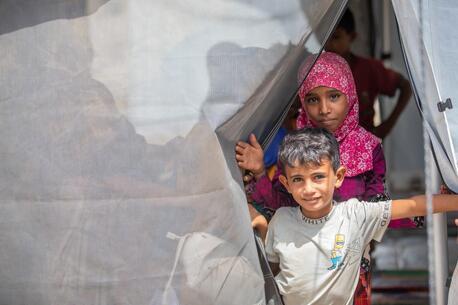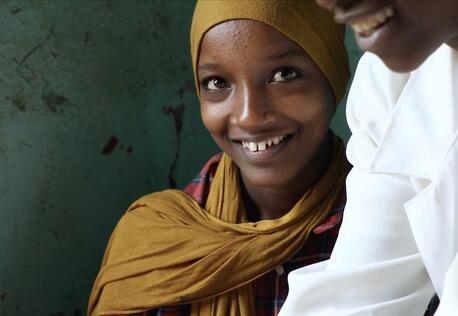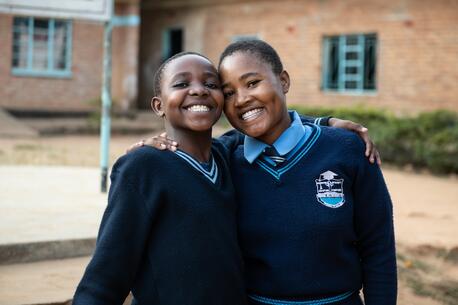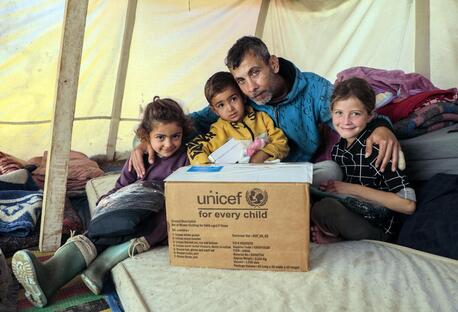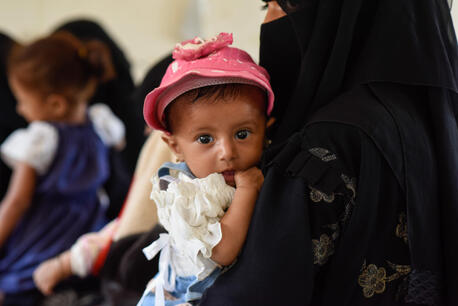
Parenting: 6-month-old babies' developmental milestones
A comprehensive guide to parenting a 6-month-old baby.
As your baby hits the remarkable milestone of 6 months, a whole new world of development and exploration unfolds. Understanding your 6-month-old's growth, from emotions to eating habits, is essential. Knowing what to expect and how to provide the right nurturing and support is crucial for their development.
Here is a guide to what to expect:
Social and emotional milestones
At 6 months old, your baby starts making more sounds as they try to express their feelings and become more curious about their surroundings. Your baby will demonstrate their growing abilities to connect with the world as they:
- Recognize familiar faces and show that they can distinguish between those they know and those they don't.
- Express and respond to the emotions of others.
- Enjoy playful interactions with caregivers and peers.
- Show an increasing fascination with their reflections.
Six months of loving care prepares babies well for the second half of their first year, another period of exponential growth. To provide encouragement and support, parents can:
- Have conversations with their babies, encouraging them to express all the new sounds they're learning to make.
- Incorporate a baby-friendly mirror into playtime activities. Ask them about the baby they see in their reflections.
- Continue to play all the fun games they know how to play, like peek-a-boo, and make up new ones you'll both enjoy.
Language and communication development
At 6 months, babies' language skills begin to blossom. They respond to their name, experiment with vowel and consonant sounds and show signs they want to speak. They may not have the words yet, but they have no trouble expressing emotions. Babies let parents know what they like and how they feel by:
- Recognizing and responding by name.
- Stringing vowel and consonant sounds together and showing that they like mom and dad to take turns saying them, too.
- Making sounds in response to those they hear.
- Using the sounds they make to express their positive and negative emotions.
As babies' language skills develop, parents can help them learn by actively engaging with them and staying attentive. Other ways to encourage them include:
- Fostering communication through interactive exchanges. Talk to your baby as you go about your days together.
- Using baby's name in everyday exchanges.
- Reading to together.
- Responding to the sounds your baby makes and encouraging them to say more.
A 6-month-old's brain development
At 6 months, babies are curious and eager to explore. And now, because the left side of the brain has started communicating with the right side, they are better equipped to do so. Babies engage and learn about the world around them by:
- Grasping objects and bringing them up to their mouths.
- Passing toys and other objects from one hand to the other.
- Showing greater coordination.
Though babies work hard to meet their milestones at this stage, parents' engagement with their little ones is key to brain development, making those strides possible.
According to the American Academy of Pediatrics, babies interact by making sounds, facial expressions, and gestures. When parents mirror their interactions, they are helping their children's brains develop neural pathways. This back-and-forth, called serve and return, is essential building block of brain development.
Other ways parents can help babies' developing brains include:
- Providing age-appropriate toys that stimulate sensory exploration.
- Engaging in dialogue about objects to enhance cognitive development.
Movement and physical milestones
By 6 months, babies' physical abilities show remarkable progress. They have greater control over their upper bodies and stronger muscles.
At 6 months, look for them to begin:
- Sitting up if helped into a seated position.
- Rolling over in both directions.
- Being able to hold a standing position while parents hold them.
- Grasping things with their thumb and forefinger.
With lots of support, baby proofing and encouragement, 6-month-old babies are ready to make great leaps. Things parents can do to help babies practice their new moves safely:
- Give babies lots of opportunities to practice.
- Position toys so they are within reach but far enough away so they have to stretch.
- Make sure they have plenty of room to move around.
- Ensure a safe environment for exploration and movement.
Food and nutrition for a 6-month-old
The switch to solid foods marks a significant milestone in your baby's nutritional journey. From showing interest in food to exploring different textures, babies can now turn mealtime into an exciting adventure. Expect babies to:
- Show an interest in food by opening their mouths when spoon-fed.
- Move food around in their mouths when they chew.
- Start eating cereals and puréed foods like carrots, sweet potatoes and pears.
Parents can help their babies develop their palettes by:
- Introducing soft foods alongside breast milk or formula.
- Offering a variety of tastes and textures.
- Starting solid foods with single-ingredient purées like sweet potatoes and cereals
Signs to watch out for
Every baby is different; parents know their babies better than anyone else. However, it can't hurt to consult your pediatrician if your baby isn't:
- Showing affection with parents or caregivers, laughing or responding to sounds around them.
- Sounding out vowels and consonants — a sign a baby is on track to begin talking.
- Rolling over or showing interest in grasping objects within reach.
Though parents may dread confirmation of their fears, knowledge is power, and quick intervention is key. When confronting some developmental delays, data shows that early detection, evaluation and support can help and pave the way for future growth and development.
